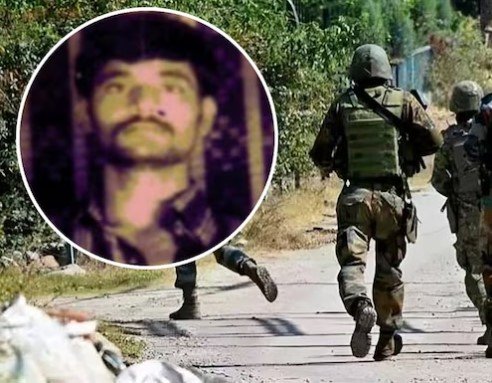Hyderabad: Indeed, he was the last rebel standing in North Andhra’s fading revolutionary fire. Nambala Keshava Rao, also known as Basavaraju or Gaganna, was a prominent Indian Maoist leader and the General Secretary of the Communist Party of India (Maoist), an outlawed extremist group. Born in 1955 in Jiyannapet village, Srikakulam district, Andhra Pradesh, he was killed on May 21, 2025, in a significant encounter with security forces in Chhattisgarh’s Narayanpur district, along with 26 other Maoists. His death marked a major blow to the Maoist movement, as he was considered a key strategist and the backbone of the organization.
Background and Early Life
Education and Early Activism: Rao was the son of a schoolteacher and a former kabaddi player. He pursued a B.Tech degree at the Regional Engineering College (now National Institute of Technology) in Warangal, where he was drawn to left-wing student politics. During his time at the institute in the 1970s, he became involved with the Radical Students Union (RSU), a group aligned with the CPI (Marxist-Leninist) People’s War. His only recorded arrest occurred in 1980 during a clash between the RSU and the RSS-affiliated Akhil Bharatiya Vidyarthi Parishad (ABVP) in Srikakulam.
Entry into Maoism: Influenced by the Maoist ideology prevalent at his college, Rao joined the Naxalite movement in the 1970s. He went underground after his 1980 arrest, becoming a key figure in the CPI (ML) People’s War, a precursor to the CPI (Maoist).
Rise to Leadership
Early Roles: Rao was a key organizer when the CPI (ML) People’s War was formed in 1980 in Andhra Pradesh. He was among the first commanders to expand the group’s influence into the East Godavari and Visakhapatnam districts. In 1987, he received training in guerrilla tactics and explosives from former Liberation Tigers of Tamil Eelam (LTTE) fighters in Bastar, honing his expertise in ambush strategies and improvised explosive devices (IEDs).
Central Committee and Politburo: By 1992, Rao was elected to the Central Committee of the CPI (ML) People’s War. After the 2004 merger of the People’s War and the Maoist Communist Centre of India (MCCI) to form the CPI (Maoist), he was appointed head of the Central Military Commission (CMC) and became a Politburo member. His expertise in military tactics and explosives made him a critical asset.
General Secretary (2018): Rao rose to the top of the CPI (Maoist) in November 2018, succeeding Muppala Lakshmana Rao (alias Ganapathy), who stepped down due to health issues. As General Secretary, Rao became the supreme commander, overseeing the group’s military and ideological strategies. His aggressive leadership style and focus on guerrilla warfare marked a more violent phase for the organization.
Key Activities and Attacks
Rao was implicated in several high-profile Maoist attacks, earning him a reputation as a mastermind of deadly operations:
2010 Chintalnar Ambush: Led a landmine attack in Dantewada, Chhattisgarh, killing 76 CRPF personnel.
2013 Jhiram Ghati Attack: Orchestrated an ambush on a Congress convoy in Chhattisgarh, killing several senior party leaders, including Mahendra Karma, the founder of the anti-Maoist Salwa Judum militia.
2018 Araku Killings: Suspected of planning the assassination of Telugu Desam Party MLA Kidari Sarveswara Rao and former MLA Siveri Soma in Andhra Pradesh.
Other Attacks: Rao was linked to the 2008 Balimela attack on Greyhounds police (37 killed), the 2019 Shyamgiri attack (killing BJP MLA Bhima Mandavi), and the 2021 Tekalgudem attack (22 security personnel killed).
Significance and Expertise
Military Strategist: Rao was renowned for his expertise in guerrilla warfare, military tactics, and the use of IEDs, which made him a formidable opponent for security forces. He headed the People’s Liberation Guerrilla Army (PLGA) and was instrumental in directing the group’s operations across Chhattisgarh, Odisha, Andhra Pradesh, and Maharashtra.
Ideological Commitment: A staunch believer in Marxism-Leninism-Maoism, Rao combined ideological fervor with tactical aggression, strengthening the Maoist foothold in India’s “Red Corridor.”
Elusiveness: Despite a bounty of ₹1.5 crore and being on the National Investigation Agency’s most-wanted list, Rao evaded capture for over four decades, except for his 1980 arrest.
Impact and Death
Encounter in 2025: On May 21, 2025, Rao was killed in a 70-hour operation named Operation Kagar in the Abujhmad forests, a Maoist stronghold. The operation, involving the District Reserve Guard (DRG) and CoBRA commandos, was based on intelligence about senior Maoist leaders’ presence. Union Home Minister Amit Shah hailed it as a “landmark achievement” in the fight against Naxalism, noting it was the first time a general secretary-ranked Maoist leader was eliminated.
Impact on Maoist Movement: Rao’s death, alongside 26 other Maoists, was a significant setback for the CPI (Maoist), potentially causing a leadership crisis and lowering cadre morale. Security officials believe it could disrupt the group’s ability to reorganize, aligning with the Indian government’s goal to eliminate Naxalism by March 2026.
Conclusion
Nambala Keshava Rao rose from a student activist to the top of the CPI (Maoist) through his technical expertise, military acumen, and ideological commitment. His leadership was marked by some of the deadliest attacks on Indian security forces and political figures. His elimination in 2025 is seen as a pivotal moment in India’s battle against Left-Wing Extremism, potentially weakening the Maoist insurgency significantly.


